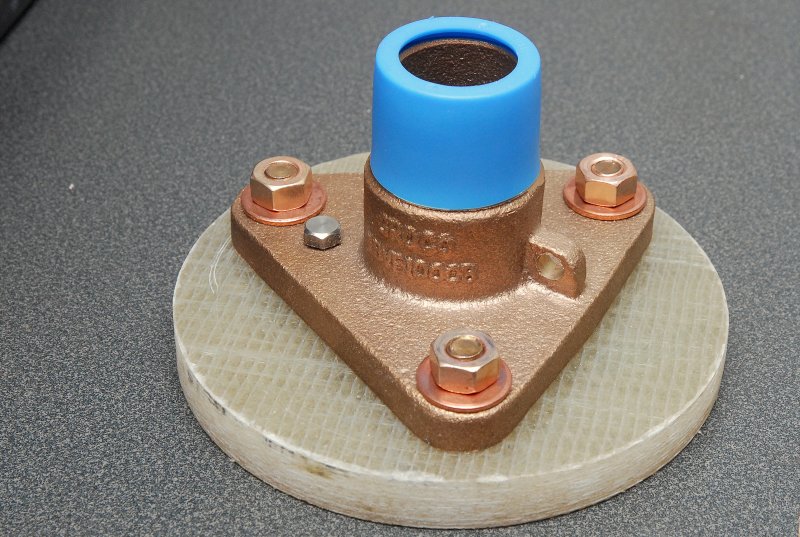Hi folks. I'm trying to refit our 2005 Hunter 306 after it's been sitting on land for 3 1/2 years. I just cleaned up quite a few gallons of grungy bilge water, and I noticed that 2 or 3 thru-hulls which were wet for that long have plywood backing disks which are not in good shape. They were probably only in 1/2" of water, so the valve bodies seem fine, but the plywood disks are spongy, delaminated and shot. Also the sealant between the hull and the plywood is totally unstuck: whatever these were bedded in, it's not doing much good now, as it's more like a loose rubbery washer. I'll note that Hunter paid to have all the thru-hulls replaced a few years after we bought the boat, perhaps in 2007? I don't recall why (maybe someone else does).
So the first question is: should I replace both thru-hull and valves? I think the answer is yes, given that it's probably almost as much trouble as unscrewing everything, cleaning, and rebedding with a fiberglass backing plate.
The second question: if I replace everything, should I use a proper seacock with a flange, or something similar to what is currently installed? There are only 2 reasons why I might not want to use a flanged seacock:
1) if I don't have clearance for the flange where the seacock is located (mainly worried about the head raw water intake, which is jammed right next to the stuffing box in a very tight location)
2) In Mainsail's article Replacing Thru-Hulls and Seacocks - Marine How To , he says "IMPORTANT: If your vessel lacks the skin-thickness for through-bolting and countersinking the heads do not through bolt! Some boats do not have thick enough hulls for this!" So how do I know if my Hunter has enough hull thickness? It's a very lightweight boat, really for inshore/coastal sailing. I guess I can measure the hull after I remove one or more of the existing thru-hulls. Maybe I could just use a round-head brass bolt and not countersink? After all, the thru-hull already protrudes, and the 306 is no racing boat.
Thanks for your comments,
Jay
So the first question is: should I replace both thru-hull and valves? I think the answer is yes, given that it's probably almost as much trouble as unscrewing everything, cleaning, and rebedding with a fiberglass backing plate.
The second question: if I replace everything, should I use a proper seacock with a flange, or something similar to what is currently installed? There are only 2 reasons why I might not want to use a flanged seacock:
1) if I don't have clearance for the flange where the seacock is located (mainly worried about the head raw water intake, which is jammed right next to the stuffing box in a very tight location)
2) In Mainsail's article Replacing Thru-Hulls and Seacocks - Marine How To , he says "IMPORTANT: If your vessel lacks the skin-thickness for through-bolting and countersinking the heads do not through bolt! Some boats do not have thick enough hulls for this!" So how do I know if my Hunter has enough hull thickness? It's a very lightweight boat, really for inshore/coastal sailing. I guess I can measure the hull after I remove one or more of the existing thru-hulls. Maybe I could just use a round-head brass bolt and not countersink? After all, the thru-hull already protrudes, and the 306 is no racing boat.
Thanks for your comments,
Jay





